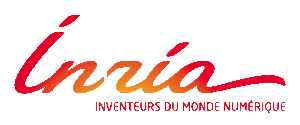Grid5000:Home: Difference between revisions
No edit summary |
No edit summary |
||
| Line 7: | Line 7: | ||
Key features: | Key features: | ||
* provides '''access to a large amount of resources''': 15000 cores, 800 compute-nodes grouped in homogeneous clusters, and featuring various technologies: GPU, SSD, NVMe, 10G and 25G Ethernet, Infiniband, Omni-Path | * provides '''access to a large amount of resources''': 15000 cores, 800 compute-nodes grouped in homogeneous clusters, and featuring various technologies: PMEM, GPU, SSD, NVMe, 10G and 25G Ethernet, Infiniband, Omni-Path | ||
* '''highly reconfigurable and controllable''': researchers can experiment with a fully customized software stack thanks to bare-metal deployment features, and can isolate their experiment at the networking layer | * '''highly reconfigurable and controllable''': researchers can experiment with a fully customized software stack thanks to bare-metal deployment features, and can isolate their experiment at the networking layer | ||
* '''advanced monitoring and measurement features for traces collection of networking and power consumption''', providing a deep understanding of experiments | * '''advanced monitoring and measurement features for traces collection of networking and power consumption''', providing a deep understanding of experiments | ||
Revision as of 23:57, 11 February 2020
|
Grid'5000 is a large-scale and flexible testbed for experiment-driven research in all areas of computer science, with a focus on parallel and distributed computing including Cloud, HPC and Big Data and AI. Key features:
Grid'5000 is merging with FIT to build the SILECS Infrastructure for Large-scale Experimental Computer Science. Read an Introduction to SILECS (April 2018)
Older documents:
|
Random pick of publications
Five random publications that benefited from Grid'5000 (at least 2925 overall):
- Hugo Thomas, Guillaume Gravier, Pascale Sébillot. One-shot relation retrieval in news archives: adapting N-way K-shot relation classification for efficient knowledge extraction. KES 2024 - 28th International Conference on Knowledge-Based and Intelligent Information & Engineering Systems, Sep 2024, Seville, Spain. pp.1060-1069. hal-04708239 view on HAL pdf
- Guillaume Rosinosky, Donatien Schmitz, Etienne Rivière. StreamBed: Capacity Planning for Stream Processing. DEBS 2024 - 18th ACM International Conference on Distributed and Event-based Systems, Jun 2024, Lyon, France. pp.90-102, 10.1145/3629104.3666034. hal-04708354 view on HAL pdf
- Wedan Emmanuel Gnibga, Andrew A Chien, Anne Blavette, Anne-Cécile Orgerie. FlexCoolDC: Datacenter Cooling Flexibility for Harmonizing Water, Energy, Carbon, and Cost Trade-offs. e-Energy 2024 - 15th ACM International Conference on Future and Sustainable Energy Systems, Jun 2024, Singapore, Singapore. pp.108-122, 10.1145/3632775.3661936. hal-04581701 view on HAL pdf
- Houssam Elbouanani, Chadi Barakat, Walid Dabbous, Thierry Turletti. Fidelity-aware Large-scale Distributed Network Emulation. Computer Networks, 2024, 10.1016/j.comnet.2024.110531. hal-04591699 view on HAL pdf
- Hee-Soo Choi, Priyansh Trivedi, Mathieu Constant, Karën Fort, Bruno Guillaume. Beyond Model Performance: Can Link Prediction Enrich French Lexical Graphs?. The 2024 Joint International Conference on Computational Linguistics, Language Resources and Evaluation (LREC-COLING), May 2024, Turin, Italy. hal-04537462 view on HAL pdf
Latest news
Failed to load RSS feed from https://www.grid5000.fr/mediawiki/index.php?title=News&action=feed&feed=atom: Error parsing XML for RSS
Grid'5000 sites
Current funding
As from June 2008, Inria is the main contributor to Grid'5000 funding.
INRIA |
CNRS |
UniversitiesUniversité Grenoble Alpes, Grenoble INP |
Regional councilsAquitaine |


